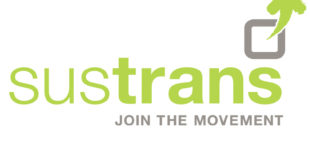Improving access to the National Cycle Network can have huge benefits for the key areas of public health and wellbeing, achieving environmental goals, and supporting economic recovery, according to new research.
The report, published by walking and cycling charity Sustrans, the custodians of the network, is an update of its 2018 Paths for Everyone report.
The latest report celebrates the improvements to accessibility over the last three years across the network and highlights the value it has held for the public throughout the pandemic as people turn to active travel as a means of transport and exercise.
According to the report, 72% of users stated the network is their best option for transport, with 95% of using it for exercise. The network has also seen increased use by the public throughout the pandemic.
Since 2019/20, approximately 121 million more trips were taken on the network than the previous year, whilst at the height of the pandemic in 2020, it carried approximately 4.9 million users over 764.8 million trips.
The report also updates on successes achieved since the 2018 objective to immediately improve access to the network for all users. Sustrans has removed or reclassified 3,733 miles of inaccessible parts of the National Cycle Network in 2020 to create a safer and better-quality network overall. From 16,519 miles in 2018, the network has been reduced to 12,786 miles in 2020. Sustrans has also removed or redesigned 315 barriers to allow access for wheelchairs and buggies.
However, the report highlights the need for the further development required to fully achieve equity of access for the UK public and regular network users – walkers, wheelers, cyclists and horse riders.
Sustrans found that if two-thirds of the network became traffic-free and accessible to all by 2040, the 2019 contribution of £2.1billion per year would increase to £3.6billion per year by 2040. Investing in the network will also help reduce carbon emissions from private transport and is key to reaching net-zero in line with the UK Government’s 2050 carbon emissions goals. Approximately 619 miles of the network are within Air Quality Management Areas.
Sustrans said it has a vision to provide a connection between every community of at least 10,000 people in the UK. This presents a clear opportunity for the network to become a backbone in addressing the three national priorities: public health and wellbeing, environmental goals, and economic recovery, subject to multi-year funding and investment.
Xavier Brice, CEO at Sustrans, said: “In 2018, Sustrans set a new vision for the National Cycle Network and 15 concrete steps to realise it when we published ‘Paths for Everyone’. Our ‘Three Years On’ report highlights the progress we’ve made working with our many partners, volunteers, and supporters, and celebrates the network as a vital part of the UK’s green infrastructure.
Read more: Is there growth beyond the boom? Bicycle Association releases 2021 cycling impact report
“The huge increase we’ve seen in the number of people relying on the network for exercise and travel has proved just how crucial these routes are in connecting people to places and to each other, providing family-friendly spaces and boosting local economies.
“In times of public health crisis, the climate emergency and substantial rises in the cost of living, active travel has never been more important. The network was there for the public when it was needed throughout the pandemic, and it must be protected and developed to ensure it will be there for the future.”
 BikeBiz Bicycle and cycling retail news
BikeBiz Bicycle and cycling retail news




